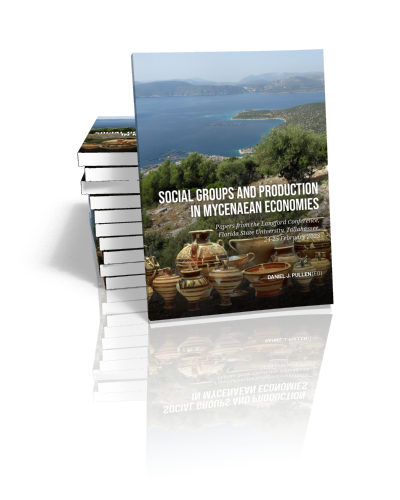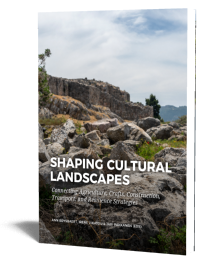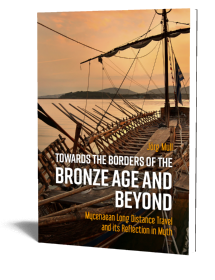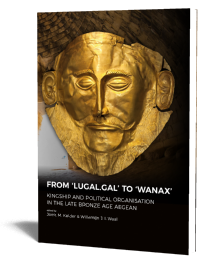Abstract:
The main goal of this volume is to look at social groups involved in economic activity other than members of the palace-based institutions and “elites” in Late Bronze Age Mycenaean Greek societies. The palaces and elites are the usual subject of studies of ancient economies, often from a top-down approach, but here we consider a fuller range of the members of a society, their organization, their institutions, and their contributions to the economies of those societies from bottom-up approaches.
The traditional model of a highly centralized, redistributive based economy controlled by a palace and its officials is no longer viable. Non-palatial components, institutions, and individuals and how those might be organized are increasingly recognized as major components in economic activity in the Mycenaean world. In this volume we examine the various scales and of actors and institutions in Mycenaean economic activities outside palatial control, including the individual, the household, larger groups such as House societies, and markets. The possibility of Firms in the institutional economic sense is also addressed.
In addition to theoretical and methodological chapters, we present several case studies involving craft production, especially of ceramics. The results of these case studies show how economic organization in the Mycenaean world varies greatly in scale, independence of palatial control, and adaption and resilience to change.
The papers in this volume demonstrate that the economy in Mycenaean states was a complex web of institutions, organizations, and actors, and invites closer comparison to the economy in other ancient and archaic states.
Contents
Getting beyond elite versus non-elite in Mycenaean economies
Daniel J. Pullen
Reading Between the Lines: Textual Evidence for Socioeconomic Organization in the Late Bronze Age
Dimitri Nakassis
A House Divided? Social Structure Before, During and After the Mycenaean Administration at Knossos
Jan Driessen
Not a Great Kingdom: Mycenaean Economic Variation as a Measure of Nonintegration
Michael L. Galaty and William A. Parkinson
Mycenaean Economic Institutions: A Firm’s Eye View
Sarah C. Murray
Coastal Communities and Connectivity in the Late Bronze Age Aegean
Thomas F. Tartaron
Brokering Change in Southern Aegean Networks: A Comparison of Communities of Practice in the Cyclades and Mainland Greece in the Era of Minoanization
Natalie Abell
Petsas House: Potters, The Workshop, and Ceramic Production in Mycenae’s Society and Economy
Kim Shelton
Potting Communities during the Mycenaean Palatial Period
Peter M. Day and Eleftheria Kardamaki


Prof. (em.) dr.
Daniel J. Pullen
Daniel J. Pullen is Professor Emeritus of Classics at Florida State University. He co-directs (with Tom Tartaron) the Saronic Harbors Archaeological Research Project, investigating the Mycenaean harbor town of Kalamianos. He also participates in the Diros Regional Project’s Ksagounaki Excavations exploring the open-air Final Neolithic settlement and cemetery associated with the Alepotrypa Cave. He is preparing for publication the volume on the small finds from the Early and Middle Bronze Age levels at Lerna for the American School of Classical Studies at Athens. He is the author of Nemea Valley Archaeological Project I: The Early Bronze Age Village on Tsoungiza Hill (American School of Classical Studies at Athens 2011) and editor of Political Economies of the Aegean Bronze Age (Oxbow 2010). His research interests include landscape archaeology, emergence of complex societies, and socio-political and economic organization in the Aegean Neolithic and Bronze Age.
read more












